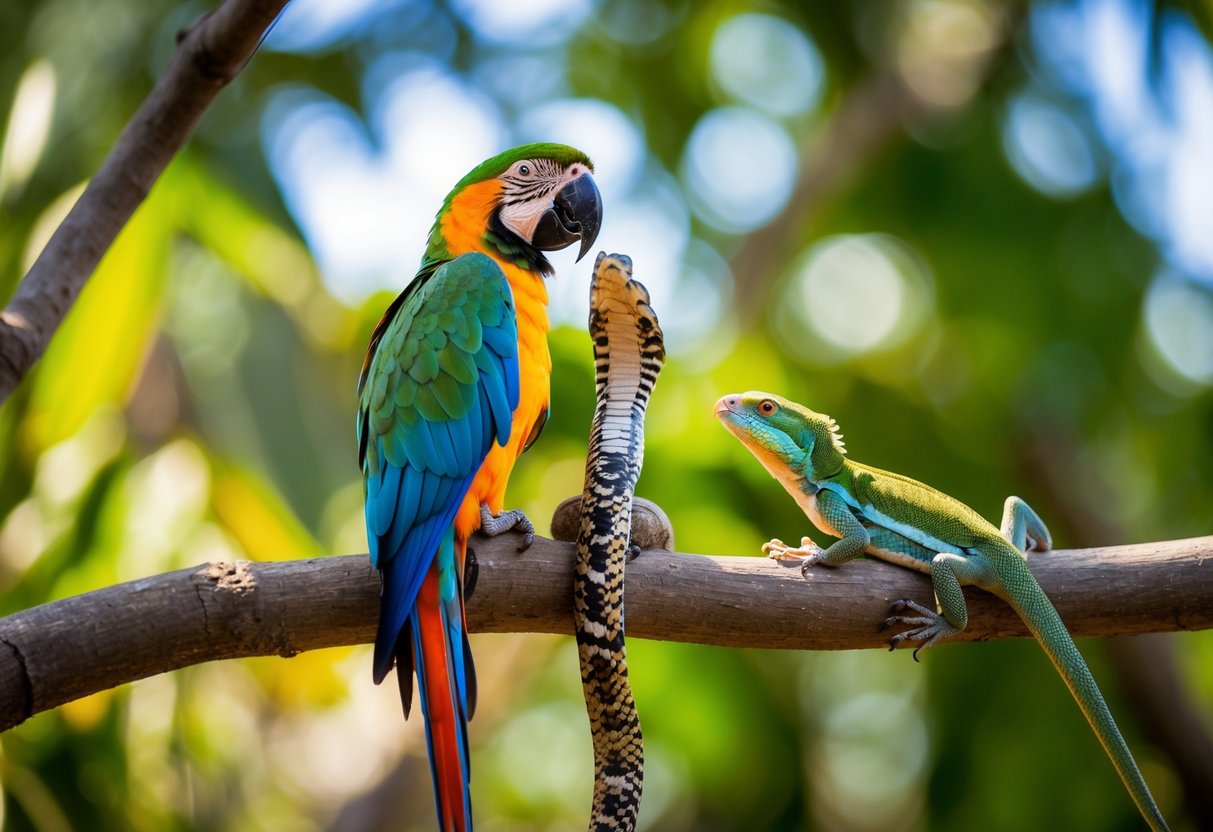
Specialized Care for Different Species
Caring for exotic pets requires knowledge and attention to their unique needs. Whether it’s reptiles, birds, or small mammals, each species demands specific care routines.
Reptiles and Amphibians
Reptiles and amphibians offer a fascinating glimpse into the world of cold-blooded animals. Temperature control is crucial; they rely on external heat sources. Providing a suitable heating system, such as heat lamps, helps maintain their optimal body temperature.
Humidity is another key element, particularly for amphibians like frogs. Terrariums with the ability to regulate moisture levels contribute to a healthy environment. Additionally, dietary requirements vary: reptiles often need live prey, like insects or small rodents, while amphibians might thrive on a diet of worms or insects. Offering a balanced diet is essential to prevent nutritional deficiencies.
Birds and Avian Species
Birds stand out with their vibrant appearances and vocal abilities. Avians rely heavily on their caregivers to meet their nutritional needs. A mix of seeds, fruits, and vegetables is vital. Specialized pellets add the required vitamins and minerals essential for their health.
Ensuring a safe and stimulating environment means providing adequate space for flight and activities. Bright toys and perches enhance their mental and physical well-being. Birds also require regular interaction to prevent behavioral issues such as feather plucking or aggression. Much like other animals, birds are sensitive to environmental changes, so consistent care routines maintain their happiness.
Small Mammals
Small mammals like guinea pigs, hamsters, and ferrets demand attention to their specific needs in terms of diet and housing. Fresh vegetables, fruits, and appropriate pellets form the basis of their diet. Water should always be accessible, and regular checks on their feeding habits can help in spotting any dietary problems quickly.
Creating an enriching habitat involves secure housing that offers areas for hiding and exploration. Regular cleaning and maintenance of their living quarters help in preventing diseases. Exercise is vital for small mammals, so providing wheels, tunnels, or play areas keeps them active and healthy. Monitoring their behavior and making adjustments as needed ensures they lead a fulfilling life.
Handling and Safety
When dealing with exotic pets, it is crucial to prioritize both their safety and that of the handler. Establishing a safe environment while ensuring that the interaction is comfortable and stress-free for the pet is key.
Safe Handling Practices
Safe interaction with exotic pets requires careful consideration of their unique needs and behaviors. Reptiles, for instance, should be supported fully when picked up to avoid injury or stress. Birds, on the other hand, might require a gentle approach, allowing them to perch naturally on the handler’s hand.
Creating a safe environment involves understanding each animal’s natural habitat. For example, a lizard needs a secure space that replicates its natural terrain to prevent accidents. Birds, too, require rooms free of hazards such as ceiling fans or open windows.
It is important to use the right equipment. Gloves can protect both the handler and the pet, especially when dealing with species that can bite or scratch. Adhering to specific guidelines and using appropriate safety gear are essential in minimizing risks during interactions.
Reducing Stress During Interaction
Stress can significantly impact an exotic pet’s health. Recognizing signs of stress, such as hissing in reptiles or feather ruffling in birds, is essential for handlers. Approaching the pet calmly, speaking softly, and avoiding sudden movements helps maintain a calm environment.
Providing a familiar setting for the pet is crucial. This could mean handling the pet in its cage or having its favorite objects nearby. Ensuring that the interaction is brief and respectful of the animal’s comfort levels can also reduce anxiety.
Owners should always observe how their pet responds to handling, adapting techniques as needed. Regularly monitored, stress-free interactions contribute to a better relationship between the pet and its caregiver.



